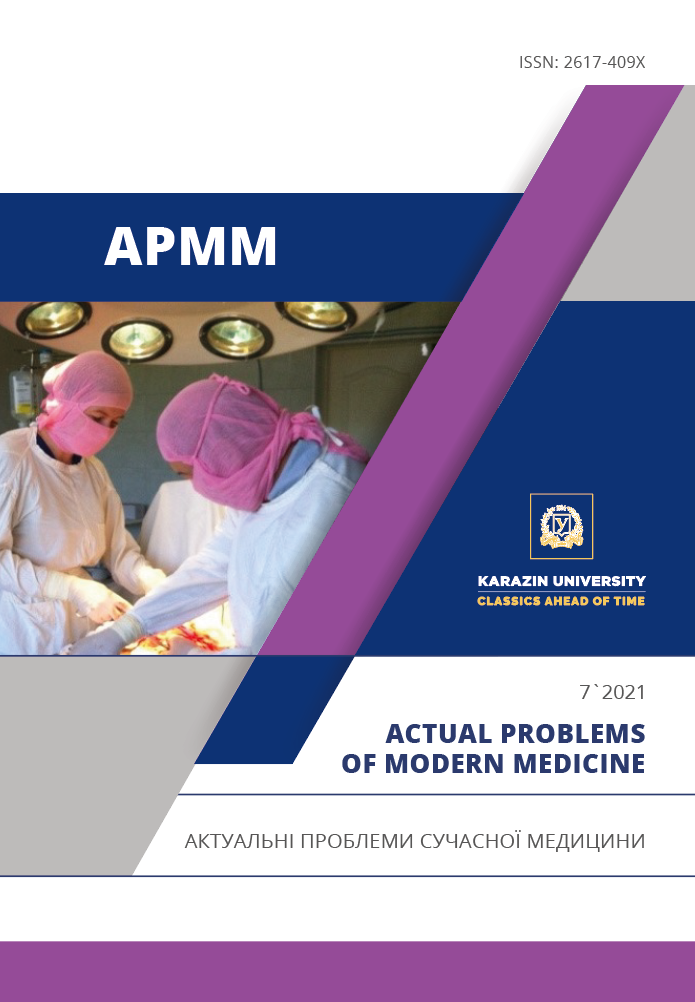Аналіз факторів, що зумовлюють виникнення харчової гіперчутливості у дітей раннього віку Львівської області
Анотація
Харчова гіперчутливість у дітей раннього віку є актуальною проблемою, оскільки охоплює широкий спектр клінічних симптомів та вимагає персоніфікованого підходу в діагностичних, лікувальних та превентивних заходах. Прогресивне збільшення різних форм харчової гіперчутливості пов’язане з багатьма факторами, зокрема недостатності нутрітивних компонентів та шкідливими екологічними умовами. Епігенетичні та генетичні фактори, які потенційно можуть бути пов’язані з харчовою гіперчутливістю та алергією, ретельно вивчаються. У цій складній ситуації виявлення факторів ризику розвитку захворювання є важливим для надання пацієнтам належних рекомендацій щодо дієти, умов життя та способу життя. Мета роботи: провести аналіз факторів, що зумовлюють виникнення харчової гіперчутливості у дітей раннього віку Львівської області. Матеріали і методи. Вивчення поширеності дітей з харчовою непереносимістю проводилося з допомогою спеціально розробленої анкети. Роздано 4500 анкет в дошкільних та медичних установах для опитування батьків дітей. Анкета включала 34 запитання, згруповані в 4 розділи: загальна інформація та детальна – частини А, Б, В. Загальна інформаційна частина анкети включала питання про регіон, де проживала дитина, паспортні дані дитини (вік, стать) та наявність серйозних захворювань (минулих чи теперішніх). Частина А містила питання щодо захворювань, які перенесла дитина; Б – генеалогічний та біологічний анамнез, наявність шкідливих звичок в родині; частина В – місцевість та побутові умови проживання, спосіб харчування та зв’язок з розвитком клінічних симптомів захворювання. Результати. Проведений аналіз 3214 анкет, які дозволили отримати зі слів батьків інформацію про анамнез та умови проживання дітей раннього віку. Проаналізовано значимість 56 факторів, обчислюючи для кожного з них коефіцієнти кореляції з формуванням харчової гіперчутливості. Статистичний аналіз дозволив серед ряду цих факторів виділили 15 ознак, що суттєво корелювали з формуванням харчової гіперчутливості у дітей раннього віку. Висновки. Дослідження дозволило не лише виявити чинники, що впливають на формування харчової гіперчутливості у дітей раннього віку, але й запропонувати математичну модель індивідуального розрахунку факторів ризику даної патології. Дані проведеного математичного аналізу можуть бути використані для розробки комплексу підбору заходів профілактики щодо розвитку харчової гіперчутливості у дітей раннього віку Львівської області.
Завантаження
Посилання
Aguilar A, Serra J. When a patient with suspected food intolerance has to be studied. Aten Primaria. 2020; 52(3):140-141. https://doi.org/10.1016/j.aprim.2020.02.002
Nedelska SM, Pakholchuk OP. Porivnyal'na kharakterystyka metodiv diahnostyky hiperchutlyvosti do kharchovykh produktiv u ditey. Astma ta alerhiya. 2017; 2: 23-29.
Begen FM, Barnett J, Barber M, Payne R, Gowland MH, Lucas JS. Parents' and caregivers' experiences and behaviours when eating out with children with a food hypersensitivity. BMC Public Health. 2017; 18(1):38. https://doi.org/10.1186/s12889-017-4594-z
Ismail FW, Abid S, Awan S, Lubna F. Frequency of food hypersensitivity in patients with Functional Gastrointestinal Disorders. Acta Gastroenterol Belg. 2018; 81 (2):253-256.
John M. James, Burks Wesley, Eigenmann Philippe. Food allergy. Elsevier Inc. 2012. P. 113-127, 143-204.
Wang M, He M, Shen X et al. Prevalence and influencing factors of food hypersensitivity in infants reported by parents in Chengdu City. Wei Sheng Yan Jiu. 2019; 48(4):594-600.
Flammarion S, Santos C, Guimber D et al. Diet and nutritional status of children with food allergies. Pediatr Allergy Immunol. 2011; 22: 161-165




